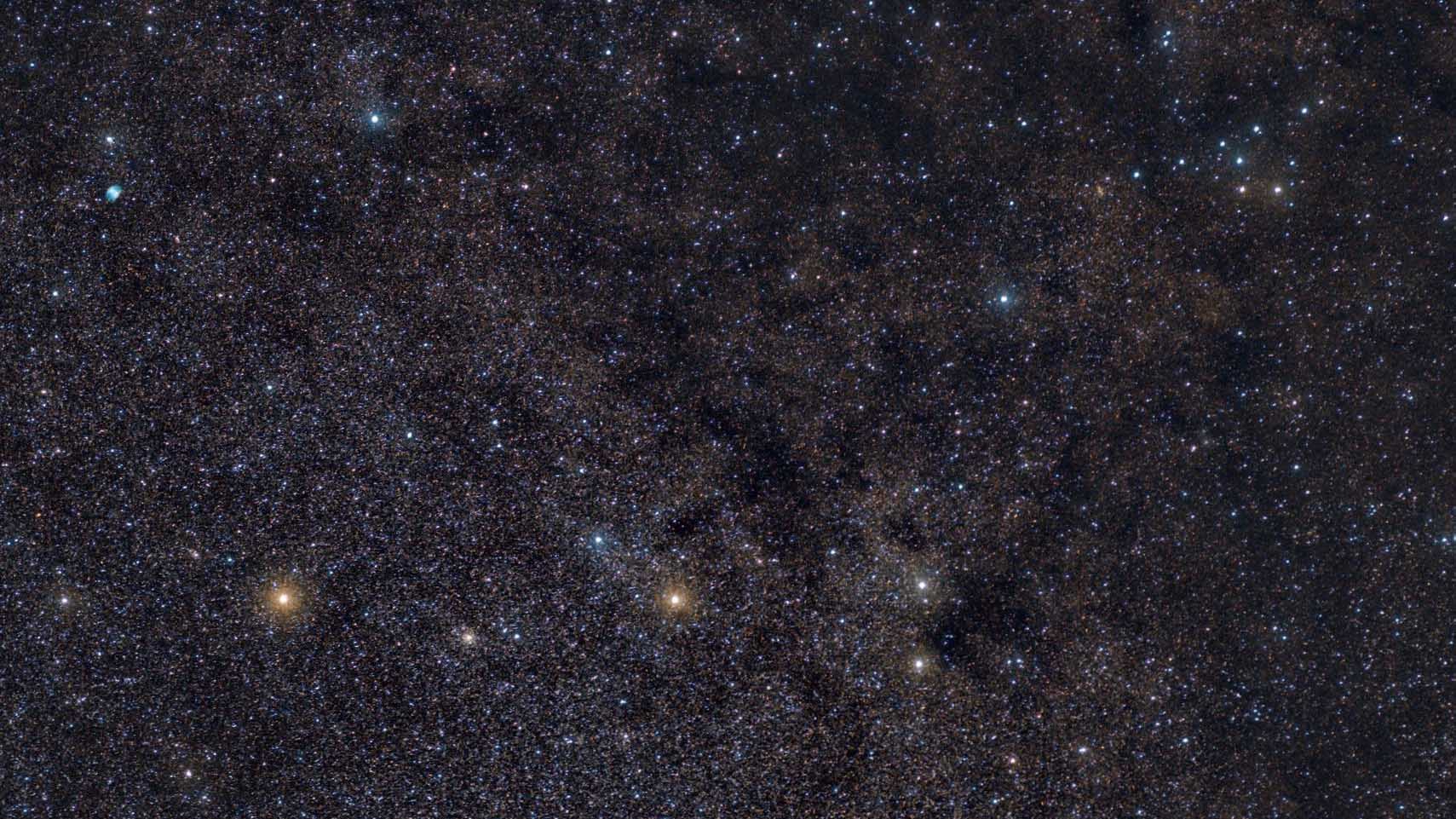From the Coat-hanger to the Dumbbell
The Coat-hanger cluster is almost too large for telescopes, and so is perfect for binoculars. Conversely, the Dumbbell Nebula M27 is just large enough.
 The brightest stars in Sagitta can be seen in the centre of the picture, in the upper section to the left is M27, and the Coat-hanger cluster is on the right. Marcus Degenkolbe
The brightest stars in Sagitta can be seen in the centre of the picture, in the upper section to the left is M27, and the Coat-hanger cluster is on the right. Marcus DegenkolbeAlthough they are among the smaller constellations, Sagitta and Vulpecula contain a wide variety of observing targets for binoculars. This tour will take you to some of the most beautiful as well as some of the relatively unknown celestial objects in this region.
Celestial coat-hanger
A speciality for binoculars is the Coat-hanger cluster Collinder 399. A row of six stars and directly below it the “hook” comprising four stars immediately create the association with the practical item. The object, which is about 1.5° × 0.5° in size, can be found simply by panning from 1 Vul to the southeast in the direction of α Sge: after just 2.5° you will come across the striking star pattern.
Even easier to find but more difficult to observe is the globular cluster Messier 71. It is located almost exactly on the connecting line between γ and δ Sge. You have to look at it for a long time to realise that this is not a single star, but a cluster which is still completely unresolved.
Just one and a half degrees south of M71 is a vertical line of fainter stars, about 0.5° in length. With a smaller magnification, these appear to be attached to one another. This asterism is catalogued as Lorenzin 4.
 Small, but impressive! Although only a few square degrees in size, the area of sky around Sagitta and Vulpecula offer lots of fun observing targets (not only) for binoculars. J. Scholten
Small, but impressive! Although only a few square degrees in size, the area of sky around Sagitta and Vulpecula offer lots of fun observing targets (not only) for binoculars. J. ScholtenBinary star and Dumbbell
If we go east from γ via η Sge, after 3° we will reach θ Sge. With binoculars, two stars can be seen at a distance of 84", which should not be a problem even for seven-times magnification. Caution: here we see two stars that only appear to be close together; the actual physical binary star cannot be resolved with our optics!
Planetary nebulae are only rarely accessible for binoculars, but in the case of Messier 27, known as the Dumbbell Nebula, we have the highlight of this class of objects already at the edge of our field of view. From θ Sge we head off in the direction of 13 Vul and after two-thirds of the way, i.e. around 3°, we should come across a rather conspicuous, clearly sizeable nebula.
Author: Kay Hempel / Licence: Oculum-Verlag GmbH
